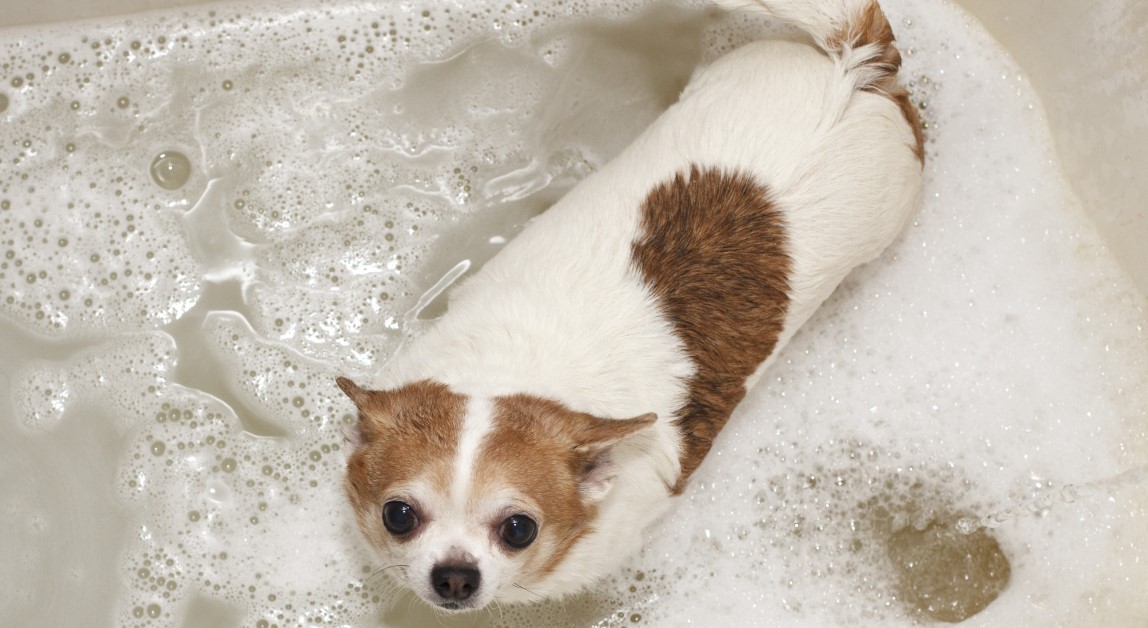What Is a Pet Wellness Plan?
Pet wellness plans are a type of preventive care plan that helps cover veterinary costs like routine care.

Pet ownership is not cheap! According to APPA, $123.6 billion was spent on pets in the United States in 2021 with vet care and product sales accounting for $34.3 billion. Some pet owners consider wellness plans in an effort to ease the high out-of-pocket costs incurred during vet visits.
Pet wellness plans reimburse pet owners for preventive and routine procedures performed at the vet. This includes services such as vaccinations, dental work, routine lab work, and other procedures designed to prevent future illness. In most cases, these procedures are not often covered by traditional pet insurance; however, many insurers offer pet wellness as an add-on.
Learn more about pet wellness plans, what they cover, and how they differ from most pet insurance policies.
What Does a Pet Wellness Plan Cover?
The biggest difference between a pet wellness plan and pet insurance is that a wellness plan covers the costs of preventive, routine care, and screenings to avoid potential health issues while insurance covers the cost of illness or injury treatments after they occur. Some of the most common services covered under a pet wellness plan include the following:
1. Vaccines
Both puppies and kittens should begin receiving a series of vaccinations starting around six to eight weeks of age. A minimum of three vaccinations should be administered in three- to four-week intervals. A final dose is typically administered at 16 weeks, followed by routine vaccinations administered throughout adulthood every one to three years. Without a pet wellness plan, pet owners are responsible for payment of each vaccine.
2. Microchipping
A microchip is a tiny device that is inserted with a small needle under the pet’s skin by a vet. The purpose of a microchip is to provide a form of permanent identification in the event that a pet is lost or stolen. Microchipping is often included in most pet wellness plans.
3. Spay and Neuter
Spaying or neutering your pet can have countless benefits, including fewer euthanized dogs and cats in the U.S. each year. Female pets typically live longer, healthier lives once spayed and are less likely to go into heat. Once neutered, males are less likely to roam away from home and have a lower risk of testicular cancer and prostate problems. With the average pet owner paying $200 per procedure, a pet wellness plan can make the cost of a spray or neuter more affordable.
4. Dental Care
Like their human companions, pets require routine dental care to keep their teeth strong and healthy. During a typical dental screening, your vet will look for problems like gingivitis, periodontal disease, or oral cancer. Pets can also undergo teeth cleanings to remove buildup and prevent tooth abscesses, oral pain, and tooth loss. Most pet insurance plans do not cover dental care, more of a reason why a pet wellness plan is a “must-have”.
5. Heartworm Tests and Prevention
Heartworm disease is a dangerous and sometimes fatal condition that occurs when worms invade the heart, lungs, and/or associated blood vessels, resulting in heart failure, lung disease, and possible damage to surrounding organs. The earlier that heartworm disease is detected, the better the chances that the pet will recover. The test requires a simple blood sample to detect the presence of parasites. Heartworm tests and preventative treatments are typically covered under most pet wellness plans.
6. Blood Tests
Routine blood work for pets typically includes a complete blood count (CBC) and an in-depth analysis of the chemical components that make up your pet’s blood. A CBC quantifies red blood cells that carry oxygen through the body and white blood cells that are responsible for your pet’s immune system health. Performing routine blood tests can help vets identify possible abnormalities that may require an intervention. Only preventive screenings are included in most pet wellness packages.
7. Flea and Tick Prevention
Veterinarians recommend regular flea and tick treatments to prevent serious health problems later. There are a number of products on the market designed to kill fleas and ticks, including special shampoos, sprays, wipes, collars, topical drops, and oral medications. Most vets recommend monthly treatments to protect cats and dogs year-round. A pet wellness plan can help cover the cost of these frequent treatments.
Are Pet Wellness Plans Worth the Cost?
The cost of a pet wellness plan can vary depending on the amount of coverage included. Most no-frills plans start around $20 per month, while more comprehensive plans can cost pet owners around $60 per month. Dogs are generally more costly to insure and the age and overall health status of the pet may play a role in how much you pay.
To determine if a pet wellness plan is worth the money, pet owners must crunch the numbers and compare the cost of a wellness plan with how much they would ordinarily pay out-of-pocket. The first year of life is often the most expensive with every year after the first being slightly lower in price. However, in most cases, pet owners can save money over their pet’s lifetime by investing in a pet wellness plan.
It’s important to remember that not all cats and dogs will display physical signs of pain or discomfort. Preventive treatments can help ensure that your pet remains healthy and happy for many years.
Ready to start saving money on pet wellness care?
Then take a look at Mint Wellness, the pet wellness plan that provides fast reimbursement on routine pet care. Save on vaccinations, wellness exams, preventatives, dental, and more!
Learn More


